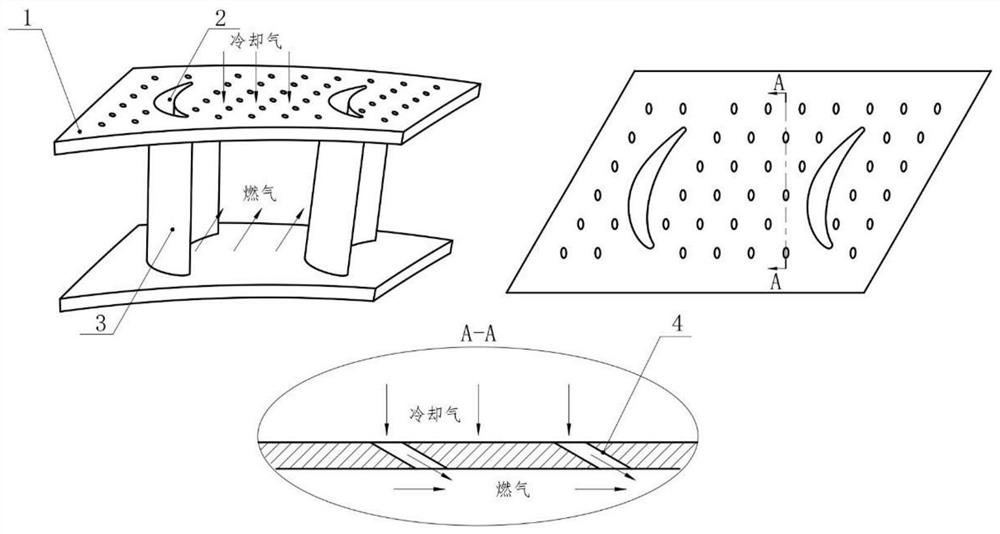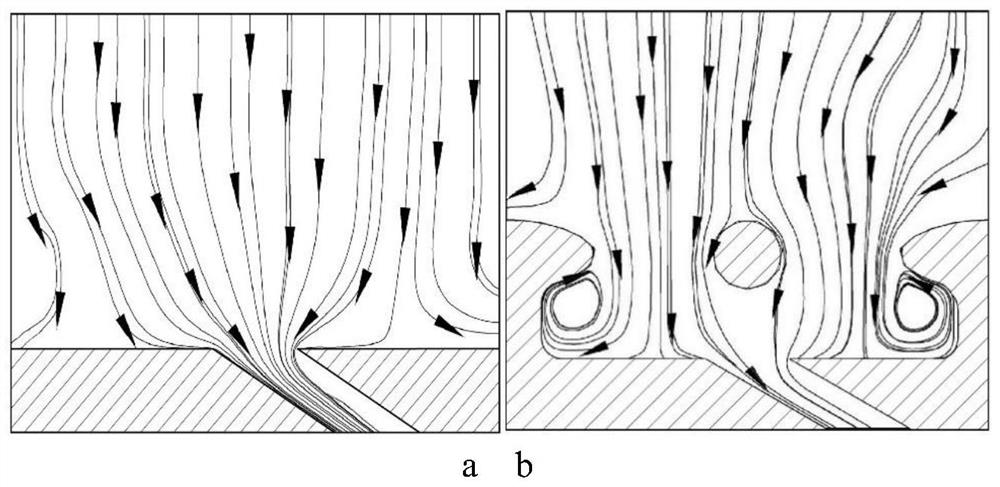A turbine blade branch network cooling structure
A technology for cooling structure and turbine blades, applied in the direction of supporting components of blades, machines/engines, mechanical equipment, etc., can solve the problems of small heat exchange area and cooling efficiency that cannot meet high thrust-to-weight ratio aeroengines, etc., to achieve increased cooling area, The effect of improving the heat exchange capacity
- Summary
- Abstract
- Description
- Claims
- Application Information
AI Technical Summary
Problems solved by technology
Method used
Image
Examples
Embodiment 1
[0031] figure 2 It is a schematic diagram of a turbine guide vane with a branch-net cooling structure provided by an embodiment of the present invention. As shown in the figure, the branch-net cooling structure of this embodiment is composed of two parts, a cylindrical support structure and a mesh connection structure. The cylindrical support structure in the branch-net cooling structure is perpendicular to the outer surface of the edge plate of the turbine guide vane, and the network connection structure is approximately parallel to the outer surface of the edge plate.
[0032] The cylindrical support structure in the branch network cooling structure is determined by the diameter φD 1 It is composed of cylinders with a length of = 1 mm, which are arranged in a regular triangle. Each cylinder is located at the vertex of the regular triangle, and the side length of the regular triangle is the distance between two adjacent cylinders L=3mm.
[0033] The network connection stru...
Embodiment 2
[0036] A turbine guide vane with a branch-mesh cooling structure, the cylindrical support structure in the branch-mesh cooling structure is defined by a diameter φD 1 It is composed of cylinders with a length of = 2mm, arranged in an equilateral triangle, and each cylinder is located at the apex of the equilateral triangle.
[0037] The network connection structure in the branch network cooling structure is determined by the diameter φD 2 = 2mm cylinder, the total height of the branch network cooling structure H = 3mm, the diameter of the gas film hole φd = 0.8mm, the angle between the axis of the gas film hole and the outer surface of the edge plate ∠A 2 =40°. The ratio of the diameter of the air film pores to the mesh connection is in the range of 0.8.
Embodiment 3
[0039] In the layout of the air film holes, a mode with less flow resistance can be adopted, that is, the cooling air inlet is arranged directly below the triangular mesh holes, such as Image 6 shown. Compared with the first embodiment, although this form reduces the distance of cooling air flow and reduces the cooling effect, it also reduces the flow resistance and loss, and also has the advantage of being easy to observe the blockage of the orifice. Therefore, the position of the air film holes can be reasonably arranged according to different working conditions and the cooling requirements of different positions of the edge plate under the condition that the size of the branch net structure remains unchanged, so as to maximize the utilization of the cooling gas.
PUM
 Login to View More
Login to View More Abstract
Description
Claims
Application Information
 Login to View More
Login to View More - R&D
- Intellectual Property
- Life Sciences
- Materials
- Tech Scout
- Unparalleled Data Quality
- Higher Quality Content
- 60% Fewer Hallucinations
Browse by: Latest US Patents, China's latest patents, Technical Efficacy Thesaurus, Application Domain, Technology Topic, Popular Technical Reports.
© 2025 PatSnap. All rights reserved.Legal|Privacy policy|Modern Slavery Act Transparency Statement|Sitemap|About US| Contact US: help@patsnap.com



